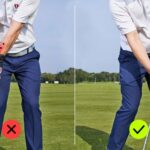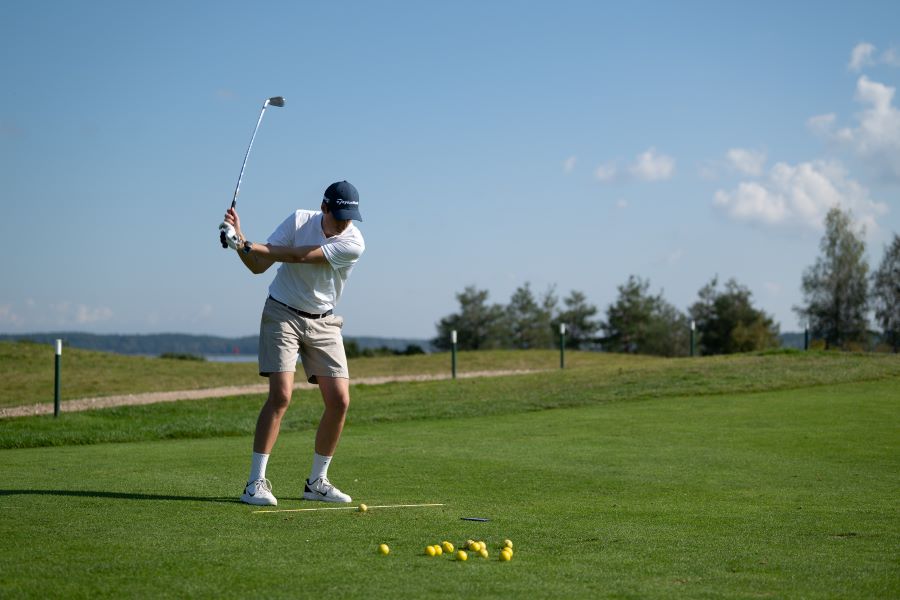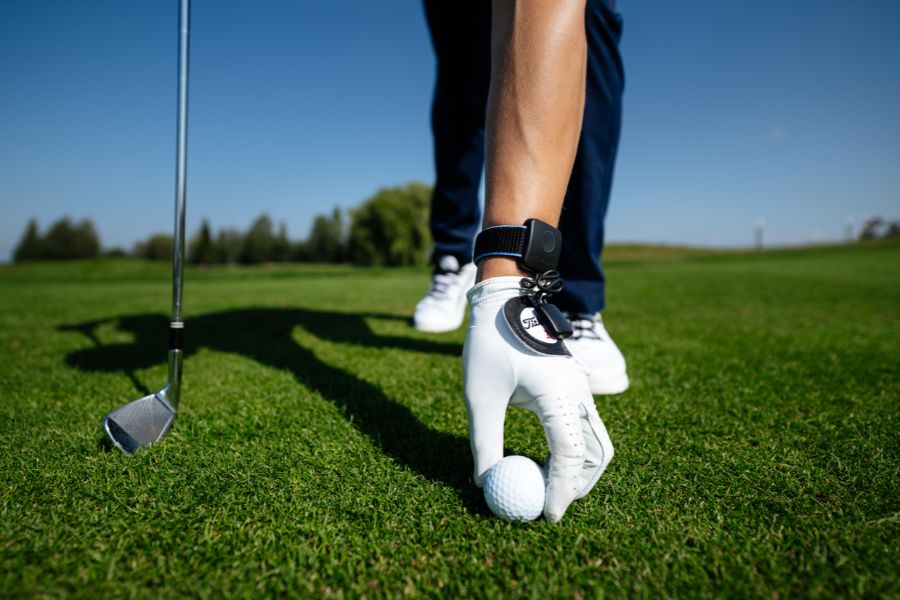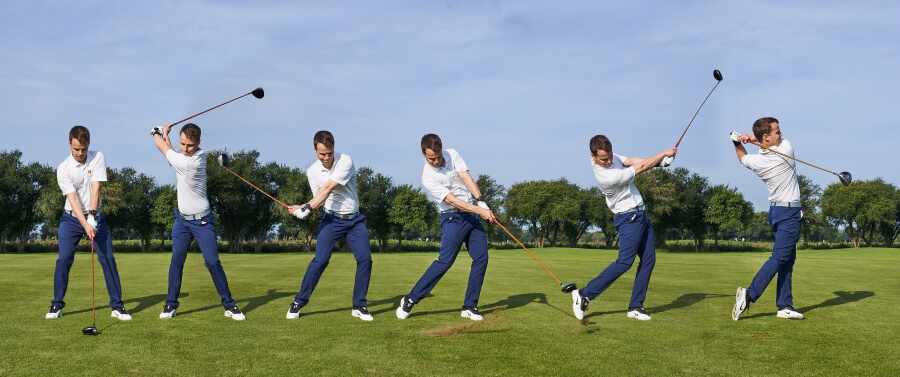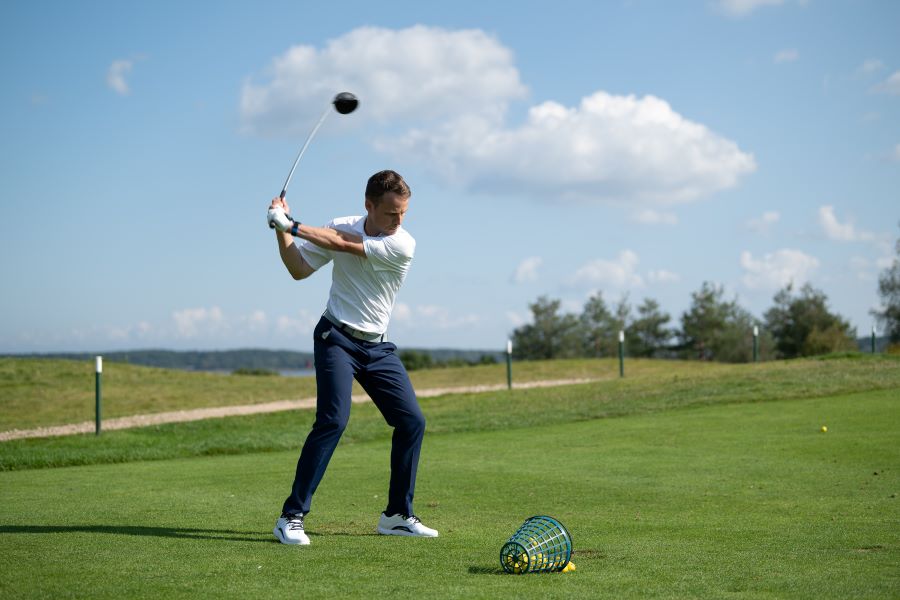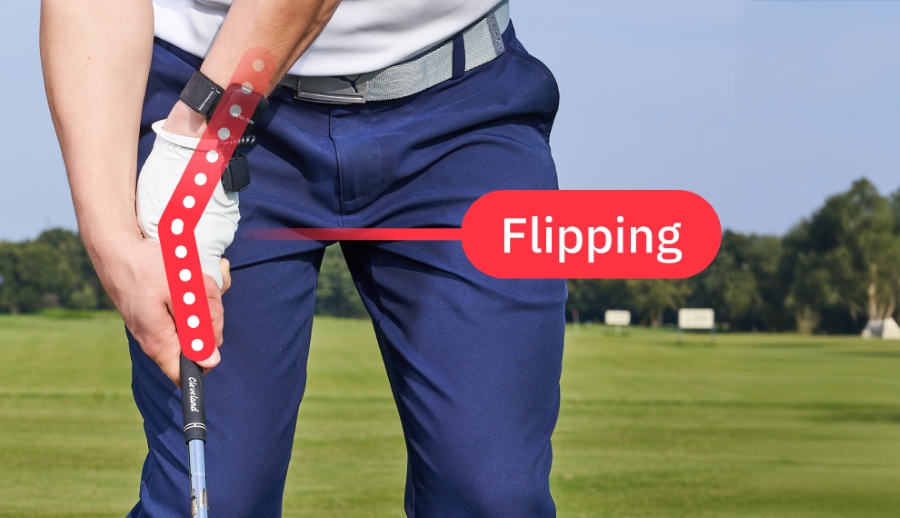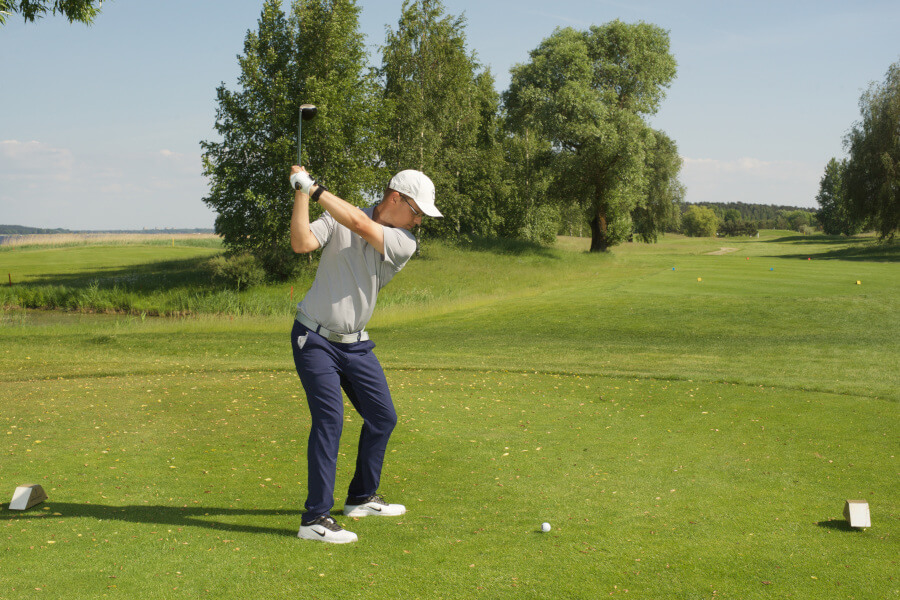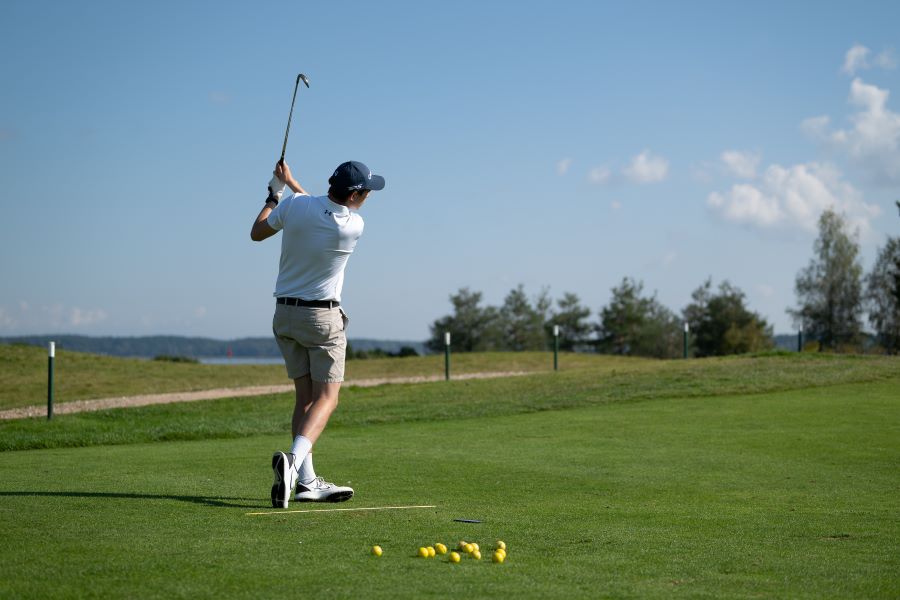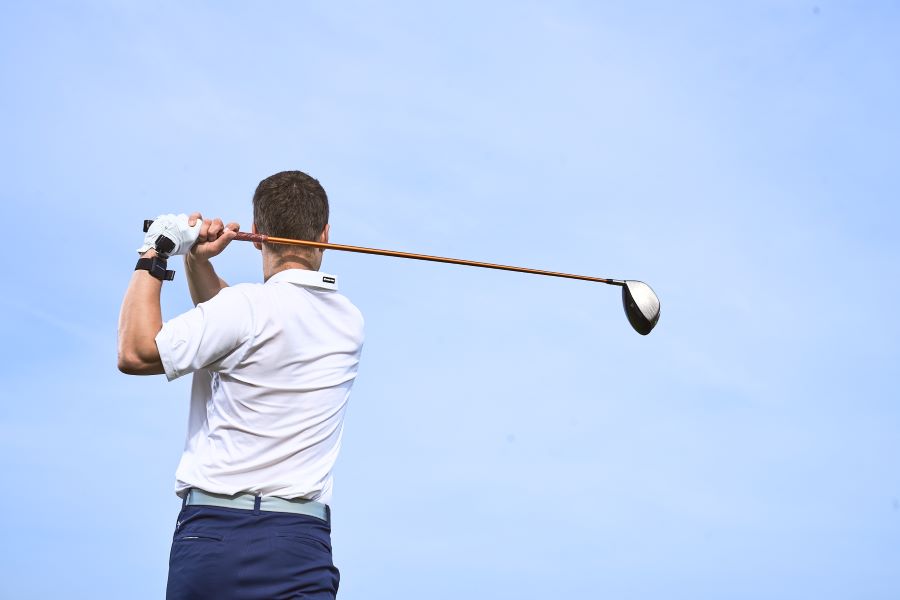How to Shallow the Golf Club (Without Overdoing It) + Drills That Work
Shallowing the golf club has become one of the most popular topics in modern instruction, and it’s easy to see why.
When most golfers picture a smooth, powerful, inside-approach downswing, they imagine a shallow shaft coming into the ball. It looks effortless. It looks athletic. And for many players, it can be the missing link to better ball striking.
But here’s the part that most golfers don’t understand:
Shallowing the club is only beneficial if you’re currently too steep. If you’re already shallow and try to shallow more, you’ll make your swing worse, not better.
We will give you the information on what shallow actually means, the wrist movements that control whether the club gets steep or shallow, why some golfers need more flexion while others need more extension at the top, and the drills to focus on to help you shallow the golf club.
Shallow the Golf Club (Key Takeaways)
- Shallowing the club helps golfers who are too steep in the downswing, leading to better contact, improved compression, and higher, straighter ball flight.
- Golfers who are already shallow often produce fat irons, hooks, pushes, and inconsistent low point. Adding more shallowing only makes things worse.
- Your lead wrist flexion and extension (bowed vs. cupped) directly control the pitch of the shaft far more than your shoulder turn or hip rotation.
- HackMotion provides real-time wrist angle data, vibration feedback, and green-zone training so you can shallow the club correctly, not blindly.
Contents
What Does It Actually Mean to Shallow the Golf Club?
Most golfers hear “shallow the club” and assume it means “drop the club behind you” or “lay the shaft off.”
Shallowing refers to the pitch of the shaft in the downswing, specifically how vertical (steep) or horizontal (shallow) the shaft becomes as the club transitions from the top.
A steeper shaft:
- Attacks the ball from above
- Produces glancing contact
- Tends to send the club across the ball
- Encourages slices and weak fades
A shallower shaft:
- Approaches more from the inside
- Helps create ball-first contact
- Retains more energy through impact
- Produces straighter shots or draws
When the club shallows properly, your low point stabilizes, and your face/path relationship becomes easier to manage.
Want a clearer comparison of both patterns? Check out our guide to the steep vs. shallow golf swing.
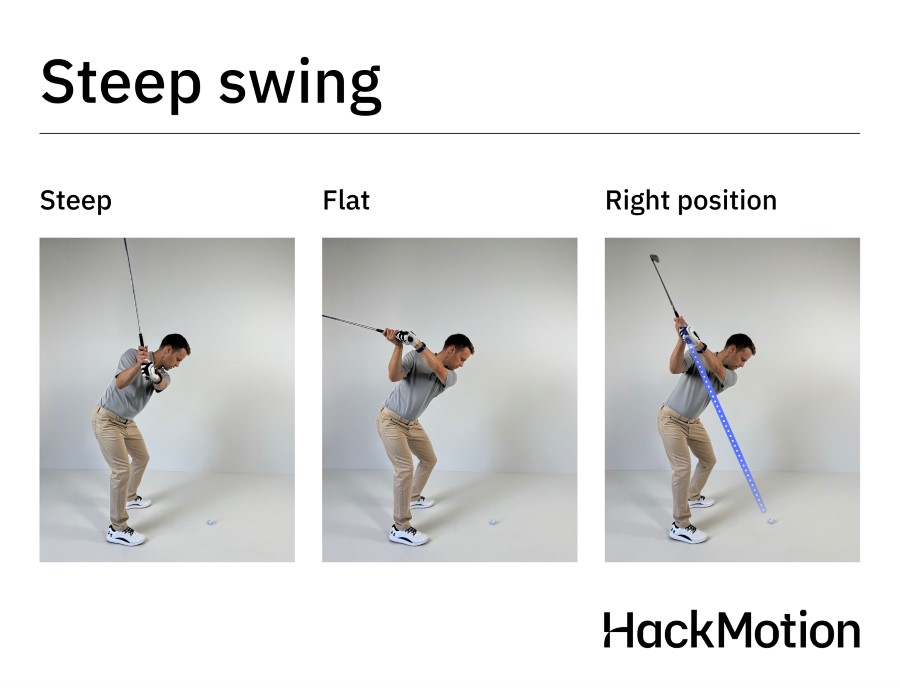
Wrist Mechanics Control Shallowing (More Than Anything Else)
Most amateur golfers will attempt to shallow the golf club with their arms and shoulders.
In reality, the wrists control whether your downswing becomes steep or shallow. If your wrist angles change, your shaft pitch changes.
- Lead wrist extension (cupping): increases the angle between the back of your lead hand and your forearm. The shaft becomes more vertical (steep). The clubface becomes more open.
- Lead wrist flexion (bowing): reduces or reverses the angle between the back of your lead hand and the forearm. It causes the shaft to become more horizontal (shallow) and the clubface to become more closed.
Want to improve your transition? Here’s our full guide on wrist motion in the downswing.
Should You Shallow the Club?
Most golfers assume they’re steep because they struggle with a slice or deep divots.
Before you start working on shallowing your swing, here are some things to look out for that may give you direction on how to work on your swing.
| If this sounds like you… | What it means | What to work on |
|---|---|---|
| Deep divots, fat shots, slices | Too steep | Learn to shallow the club (add lead-wrist flexion in transition) |
| Low, spinny contact with irons | Too steep | Create a flatter shaft in transition; use Casting Drill |
| Driver feels great but irons are inconsistent | Too shallow | Slightly steepen the shaft (add a touch of lead-wrist extension) |
| Push – hook miss pattern | Too shallow | Keep the club more in front / reduce excessive flexion |
| Fat shots from tight lies | Too shallow | Feel a more neutral top position and path |
| High fades / weak slices | Too steep | Add lead-wrist flexion and improve shallowing |
| Divots behind the ball | Could be either – but usually too shallow | Use HackMotion to check wrist angles and low-point pattern |
How to Shallow the Golf Club in 3 Simple Steps
The easiest way to shallow the club on the downswing is to start by making sure you are in a good position at the top of the backswing.
Set Up a Neutral Top Position
It’s almost impossible to shallow the club if you’re already too vertical at the top. At the top of the backswing, you need to make sure of the following things:
- The shaft is not straight up-and-down.
- The club is roughly matching your shoulder plane.
- Your lead wrist is closer to flat than heavily cupped.
With HackMotion:
- Make a few slow backswings and pause at the top.
- Check your lead wrist flexion/extension.
- Use that number as your “home base”; this is the position you want to repeat.
- You’re not trying to create a bowed or laid-off look here, just a neutral, repeatable top.
Start the Downswing With Your Body, Not Your Hands
Most golfers get steep because they use too much of their arms and hands from the top and pull the club down. That pulls the shaft vertical and sends the club across the ball.
A good shallow move starts like this:
- Shift pressure into your lead side (lead foot feels heavier).
- Let your hips and torso begin to turn toward the target.
- Keep your arms and hands soft so the club has time (and a place) to fall.
A simple feel:
From the top, let the club “sit” for a split second while your lower body starts to rotate and shift weight.
That little delay is what gives the shaft room to shallow instead of chopping straight down.
Add a Little Lead-Wrist Flexion in Transition
Once the lower body starts the move, your wrists control how much the shaft actually shallows.
From the top:
- Feel your lead wrist move from slightly cupped toward flat or slightly bowed.
- Feel your trail wrist stay bent back.
- The club should feel like it’s falling behind your hands instead of being pulled over the top.
Drills to Train Proper Shallowing (Without Overdoing It)
Once you understand the fundamentals involved with shallowing the club, you can work on drills to start repeating the position.
Here are three of the best drills to work on shallowing. The HackMotion Casting Drill and the Top Drill are the ones you can work on in real time within the HackMotion app.
HackMotion Casting Drill
Most steep golfers don’t realize how quickly they begin adding lead wrist extension in transition. That single move sends the shaft vertical and forces an across-the-ball path.
The Casting Drill helps you train the exact opposite pattern. You’ll maintain your angles long enough for the club to shallow naturally.
Fix Your Casting with HackMotion
Train to fix casting by generating power with your core and lower body.
HackMotion Casting Drill – Step by Step:
- Put HackMotion on and select the Casting Drill.
- Make a normal backswing and pause at the top to check your wrist angle.
- Start the downswing by shifting pressure forward, not pulling the handle.
- Keep the trail wrist bent and avoid adding sudden extension in the lead wrist.
- Stop at lead arm parallel and check your measurement again.
- Repeat until your transition maintains your top wrist angle.
- Blend the motion into full-speed swings.
Shallow & Strike Drill
This drill helps steep golfers learn to create a flatter shaft angle by using lead wrist flexion at the top one of the most reliable ways to shallow the club.
Shallow & Strike Drill – Step by Step:
- Make a smooth backswing and pause at the top.
- Add a small amount of lead wrist flexion until the shaft feels more laid off.
- From that position, hit short punch shots focusing on ball-first contact.
- Increase to half swings, then three-quarter swings.
- Use HackMotion to ensure you’re returning to the same top angle every time.
- Once consistent, blend the feel into your full swing.
HackMotion Top Drill
If you can’t get the club into the right position at the top of the backswing, it’s tough to shallow the club.
Work on this Top Drill using the HackMotion app to get yourself in a position you can repeat.
Top Drill in HackMotion
Train your top position by mastering optimal wrist angles. Challenge yourself to reach the ideal wrist position during a full-speed backswing.
HackMotion Top Drill – Step by Step
- Rehearse your ideal top position slowly and confirm it with HackMotion.
- Make a full-speed backswing, then purposely pause at the top.
- Check your wrist angle.
- If successful, swing through from that paused position.
- Gradually reduce the pause until it becomes one continuous motion.
Final Thoughts
Shallowing the club can help you make more consistent contact, control your ball flight, and create a more efficient path through impact. But it only works when your current pattern is too steep.
HackMotion shows you exactly what your wrists are doing: whether your lead wrist is too flexed or too extended, how your transition actually behaves, and whether the shaft is dropping into a shallow slot or drifting too far behind you.
Use HackMotion as the coach on your wrist, repeat your correct green-zone positions, and make sure you recognize the early signs of overshallowing so you don’t create a new problem while fixing the old one.





